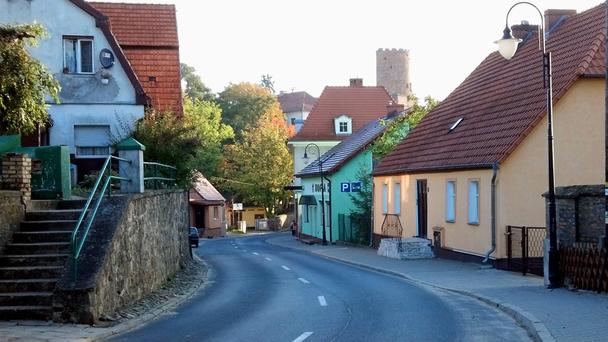It’s one of the country’s least populated regions. It’s also the most densely forested, with half the land covered in deep green woodland and more than a quarter reserved as protected nature parks. In between the great expanses of green are sparkling blue lakes, medieval castles, picturesque villages, rolling fields of wheat and the occasional vineyard. It’s a place where clichés like charming and bucolic are appropriate descriptors.People have inhabited Lubuskie for more than 1,000 years, and Germans and Poles have long sung the praises of its climate and clear air as a health aid. It’s a convenient stopover on the train route between Berlin and Warsaw. All this – yet it remains one of the least visited provinces in Poland.I started my trip in what’s known as the Pearl of Lubuskie, the map-dot hamlet of Łagów. It looks like a setting out of one of Grimms’ fairy tales: a string of 18th-century houses set on an isthmus between two lakes ringed by beech and oak forest. Bordered by two medieval gates, the hamlet is watched over by the 14th-century Castle of the Order of St John, its tower poking up through the trees like a perfectly shaped chess piece.Like many of the 20 palaces and castles in the region, the structure is now a hotel, the 14-room Zamek Joannitów. While the castle advertises itself as a luxury accommodation, the beech furniture is simple and hand-crafted, the rugs and tapestries well-worn and the beds predictably firm. Like, it feels like a treasured antique that just needs the dust blown off and a little polish applied.I got my bearings from the castle’s tower, which is open to anyone willing to climb four flights and a vertiginous ladder to the top, 35m above the village. Below, mist rose from the twin lakes on either sideof the castle and plumes of wood smoke floated from the village’s red-brick chimneys. Beyond the lakes, the forest spread as far as I could see, the occasional red and orange flare of autumn leaves interrupting the interminable green. I looked down on the town’s tiny main street, its 120m length lined with 18th-century tenement houses and capped on each end by 15th-century stone and brick gates that once marked the boundaries of the centre. It has grown since then, but not by much. The population of the town – including the houses beyond the gates – is a mere 1,500.The Grimm brothers lived in neighbouring Germany, but locals say some of their famous stories have roots in this Polish region, passed down for generations before making their way west across the border. Standing at the top of Łagów’s 700-year-old castle tower, it was easy to see a connection to those dark and fantastical tales, to imagine Hansel and Gretel skipping past the town’s gingerbread houses and leaving a breadcrumb trail into the thick forest.To explore the woods on my own, I rented a bike and pedalled out of town, past one of the gates where a stoplight controlled the non-existent traffic through a one-lane tunnel. The underpass was short enough that I could see the open road on the other side. As I reached the red stoplight, a single car pulled up to wait, forming the world’s smallest traffic jam.Outside the gate, the road curved around the shore of Trzesniowskie, the larger of the town’s two surrounding lakes. It is 20km in circumference and one of the deepest and clearest of the region’s 500 lakes, many of which are connected or close enough to portage between on the 200km-long Lubuskie Water Trail. Trzesniowskie’s visibility can reach 15m, so divers come from around the country to explore its depths.(BBC)Bakudaily.az
A dark and fantastical Polish land - PHOTO
World
23:59 | 25.06.2014

A dark and fantastical Polish land - PHOTO
In the far west of Poland along the German border, the province of Lubuskie is like something out of a fairy tale.
Follow us !










